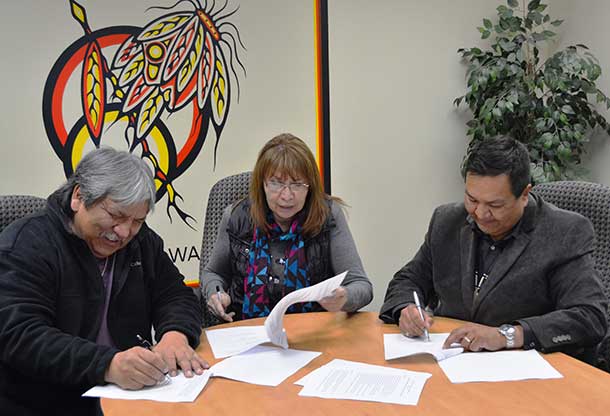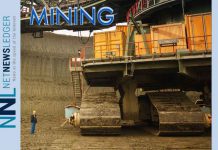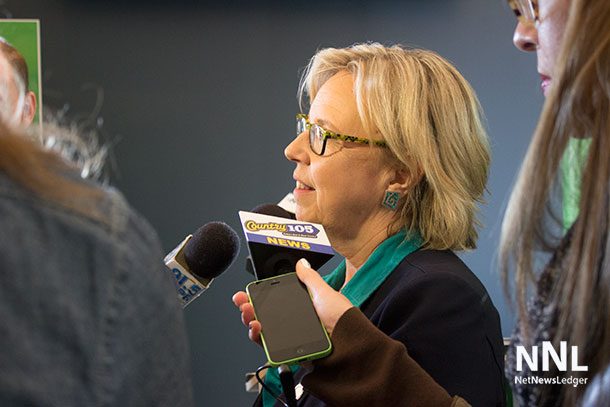
Eabametoong First Nation Chief Shares Community Viewpoint
Eabametoong First Nation – VIEWPOINT – Can we offer some clarity? It seems as though each Northern Ontario news service has obtained and shared slightly differing views on, or excerpts from, our recent All Season Community Road Study. This set of news stories emerged last week while KWG was also promoting their work towards a rail corridor study (no bikinis this time).
The reality is that our Community Road Study has always been for the purpose of gathering existing engineering and land use data for enabling informed dialogue among the 4 First Nation communities regarding options and priorities for road connection. It was explicitly intended to consider options for connecting communities together, and to Provincial highways; not industrial use of future corridors.
Most reports emphasize the length of time it has taken for ‘anything to happen’ in the Ring of Fire. Let’s be clear, the only mining project in the ROF currently under Ontario’s regulatory processes is the Noront Eagle’s Nest mine and associated infrastructure. Their Environmental Assessment filings were made in 2012, and the Terms of Reference for the EA were amended and approved by the MOECC in June 2015. This document is publicly-available (see TOR Amendment) and, with respect to infrastructure, clearly places the onus on Noront to redo the screening of four possible industrial access routes and alternatives in partnership with First Nations and Ontario, and include detailed assessment of these options in the EA process (Sec. 3 & 4, p.4). Noront hasn’t done this work with us, and prefers to wait for Ontario to tell them what to do (see Al Coutts, Aug 28).
Our Community Road Study was proposed in partnership with Webequie, Nibinamik, and Neskantaga First Nations back in 2012, funded in 2015, and completed in June 2016. It was ‘Step 1’ towards considering all available desktop research and bringing this information to our communities for discussion. Despite the limited number of visits to each community by the study team, we did agree on core concerns and interests, including connections among the First Nations. Notably, the primary near-term benefits of road connection will be realized by Federal and Ontario Governments (e.g. reduction in transportation costs and transfer payments while promoting industrial activity), and the majority of the risks could be assumed by the First Nations (e.g. reduction in social assistance and other supports, while experiencing socio-cultural change and additional pressure from resource developers in our territory). Obviously, these are critical issues for our First Nations to consider and manage in discussions with Ontario and Canada prior to racing to road development.
We have a direct negotiations table with Ontario through our Regional Framework Agreement. Eabametoong First Nation has been focused on setting a new standard for community involvement in planning for our future through this table with Ontario. Our brief documentary on our YouTube Channel describes some of this process in detail. Community based processes like these are very challenging, but all of our people need to be involved in planning for our collective future. One of the objectives of our RFA process is “industrial and regional infrastructure planning and implementation, including transportation, energy generation and transmission, on reserve infrastructure, and regional communications technology (see RFA Obj a.ii).”
While we worked quite diligently to set such a broad scope of infrastructure planning into the Framework Agreement it has proven difficult to get our Treaty partners to work with us on an integrated plan for assessing community and industrial corridors in our territory. A phased regional development plan established in partnership with First Nations, Ontario, and the Federal Government would provide meaningful assessment of cumulative effects and a process for determining whether projects could contribute to sustainable outcomes for all of Ontario. That is a logical goal in everyone’s interest. However, we have yet to see both levels of government willing to work with us on a long-term vision for the region, and are left with the competing dreams of various junior mining firms like Noront and KWG. Neither of these firms have access to the capital to build the infrastructure they desire, and neither has yet to agree to work with our Matawa-member First Nations on a reasonable approach to managing community and industrial access to the region.
To be fair, regional development planning is beyond the scope of what a company is expected to do under EA law. It is the work of governments. For example, nearly all municipal plans include processes for how any project proposal should be carefully assessed and, IF they can contribute to the long-term sustainability of communities, be integrated into a regional plan. Road, rail, or airship: pathways to sustainability must begin at the local government level. We are working with our fellow Matawa First Nations to do so based on our inherent jurisdiction and stewardship authority that has been entrusted by the Creator, and recently Supreme Court-affirmed Aboriginal and Treaty rights.
I was pleased to hear MNDM Minister Gravelle quoted in the Globe and Mail last week, affirming the positions taken by Eabametoong and other First Nations. He recognized that we have a lot of work ahead of us, and that the First Nations must be the ones leading the future planning of our region, “There’s still some important discussions that are taking place,” he said. “I continue to be optimistic that we can find a resolution whereby recommendations will come forward related to the road structure. … I can’t see us moving ahead without the support of the First Nations (see Globe and Mail, Aug 25th 2016).” Well said, Mr. Minister, this must be planned in a Government-to-Government partnership, guided by our Treaty relationship.
We are working for the livelihoods and well-being of our community members for generations to come. There are so many opportunities to collaborate and work productively with government and industry as we agree to work on long term interests, not just the short boom and bust mine promotion we’ve heard so much about over the last decade. This fall, we’ll be partnering together in new ways with other Matawa-member First Nations to combine community plans and work on achieving collective interests. Our work is complex, since it must meet the range of needs of all individual communities, but this is an exciting time for us to make use of traditional knowledge and customs and integrate our values into a clear vision for the region. We have always lived and governed the land here, and we will continue to in a way that blends the highest standards of Traditional and Western knowledge.
Meegwetch,
Chief Elizabeth Atlookan
Eabametoong First Nation






